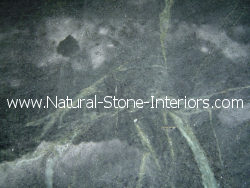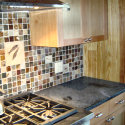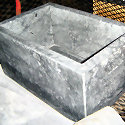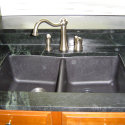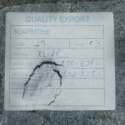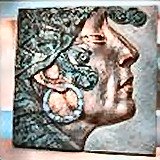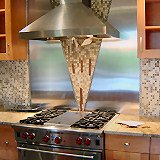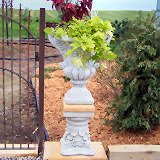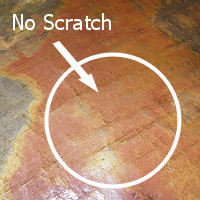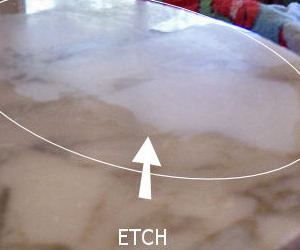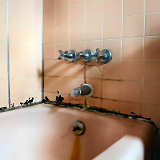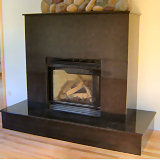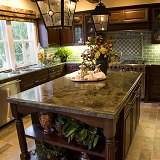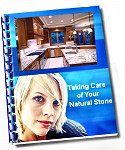|
Soapstone Facts
Here's a collection of fast & fun soapstone facts.
- In the olden days, soapstone was used for bed and foot warmers in sleighs and automobiles.
- Soapstone is not slippery when wet.
- Soapstone is a natural non stick surface.
- Soapstone Ridge in Dekalb Georgia was used by Archaic Period Indians of the Southeast (7000 B.C. -1000 B.C.) as a quarry site for
soapstone bowls, tools and other items.
- It is millions of years old.
- The Hoysala Empire temples were made from soapstone.
- Early Egyptians carved soapstone into scarabs and seals.
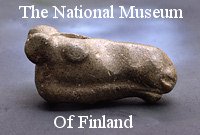
- The National Museum of Finland retains an Elk’s Head Weapon from the Stone
Age (7000 B.C. - 6000 B.C.).
- A large soapstone turtle (approx. 3' x 5' x 8') welcomes you to The Cherokee County Historical Museum in North Carolina.
- The Vikings brought items made of soapstone along wherever they went.
- Canada's first production was in 1871 from a deposit in the Eastern Townships, Qué.
Minerals Development In Canada
- Soapstone deposits in Sharwan Abbottabad were first discovered in 1880.
- During 1893, soapstone was sold in China for 1/2 a penny per pound.
- In Bali, Divinities and demons are carved from soapstone to decorate homes and temples.
- In Finland, amulets and images of gods were crafted out of soapstone.
- In South Carolina, there is strong evidence suggesting vessels were crafted out of soapstone during the Late Archaic Period (3000 B.C.-500 B.C.).
See www.nationalregister.sc.gov/MPS/MPS023.pdf
- Soapstone smoking pipes have been found among Native American Indian artifacts.
- Soapstone is usually quarried in open pit mines.
- Canada is a minor producer of soapstone.
- The famous 1,500 year old Dorset Eskimo quarry is located in the village of Fleur de Lys.
- In China and India, soapstone was used for ornaments and domestic utensils.
- Indians have used soapstone for ornaments and domestic utilities for the past 7500 years.
- Soapstone was used in colonial New England for fireplace hearths,
sinks, countertops, and wood stoves.
- Today soapstone is used most often to produce decorative objects rather than functional objects.
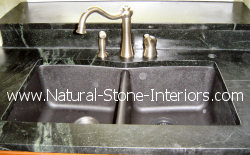
- Soapstone may also be referred to as shona stone in Africa.
- Tint epoxy blue/black to make seams blend in better after you oil your stone.
- Darken the color of a soapstone slab by increasing the hone level.
- Applying mineral oil can change the surface color of the stone.
- You can cut and finish soapstone with common wood and masonry tools.
- Soapstone sheds micro organisms. Bill Russell, CEO - The Alberene Soapstone Co.
- Soapstone is typically honed to a 320 grit finish.
- Soapstone can retain heat without breaking.
- Soapstone Facts: It can be chilled and retain the cold.
- During World War II, talc was on the list of critical minerals.
- Talc is a mineral while soapstone is a rock.
- Pure talc consists of the elements Magnesium, Silicon, Hydrogen and Oxygen.
- The mineral composition of talc varies considerably due to impurities.
- Soapstone consist mainly of the mineral talc and contains varying parts of other minerals:
chlorite, mica, tremolite quartz, magnetite or iron compounds.
- Talc is found exclusively in metamorphic rocks.
- Talc is the softest mineral on Mohs scale of
hardness.
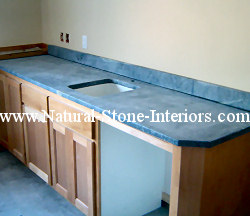
- Soapstone is either massive or flaky depending on the talc and chlorite content.
- Natural talc is white, yellow, gray, pale green or pale blue and soft.
- Chlorite is a group of rock forming minerals which are soft and usually green. They can also be white, yellow, red,
lavender or black.
- Serpentine is a group of rock forming minerals while Serpentinite is a rock.
- Some companies market 'serpentine' as a harder soapstone.
- Soapstone is softer than a fingernail. Serpentinite is harder than a fingernail.
- In the Viking era, soapstone was a main export from Scandinavia for cooking pots and lamps.
- In Pakistan, it was recently estimated that five mined deposits contained more than 2000 billion tons of soapstone.
- Fissures may seem more noticeable in soapstone when compared to other natural stones.
- Supports are recommended for areas where your stone will have an overhang of ten inches or more.
- In Norway, soapstone was considered a valuable commodity because the quarries were often referred to as silver mines.
- The Piggasen soapstone quarry was used before, during and after the Viking Age.
- Soapstone is safe to use in your oven. This is a soapstone fact!
- Soapstone artifacts were recently discovered in South Carolina at a depth of 80 cm below the grounds surface.
See www.nationalregister.sc.gov/MPS/MPS023.pdf
- Soapstone is among the most indestructible and lasting rocks.
You'll find More Info & Soapstone Facts Below:
Return from Interesting Soapstone Facts to
Soapstone
Return from Interesting Soapstone Facts to Natural Stone Interiors Home
|
What's New?
 Stone Blog. Subscribe via RSS!
Stone Blog. Subscribe via RSS!
|

